Companion Planting for THCA Hemp: Oregon's Biodiversity Approach
Oregon's progressive hemp farming community has embraced a revolutionary approach to cultivating high-quality THCA flower: companion planting. This ancient agricultural practice, combined with modern biodiversity principles, is transforming how farmers grow premium indoor THCA and outdoor varieties throughout the Pacific Northwest. By integrating diverse plant species alongside hemp crops, Oregon cultivators are discovering that nature's own partnerships can significantly enhance plant health, improve yields, and create more sustainable farming systems.
Understanding Companion Planting in Hemp Agriculture
Companion planting hemp represents a fundamental shift from monoculture farming to a more holistic approach that mimics natural ecosystems. This practice involves strategically placing different plant species near hemp crops to create mutually beneficial relationships. Unlike traditional farming methods that rely heavily on synthetic inputs, companion planting harnesses the power of plant interactions to solve common agricultural challenges.
The science behind companion planting is rooted in allelopathy – the chemical interactions between plants – and ecological principles that have governed natural plant communities for millennia. When implemented correctly, these plant partnerships can reduce pest pressure, improve soil fertility, enhance nutrient uptake, and create microclimates that benefit overall crop health. For THCA flower cultivation, these benefits translate directly into higher cannabinoid production, improved terpene profiles, and more robust plant structures.
Oregon's unique climate and growing conditions make it an ideal laboratory for testing and refining companion planting strategies. The state's diverse microclimates, from coastal regions to high desert areas, provide opportunities to develop location-specific companion planting systems that maximize the potential of both indoor THCA flower and outdoor cultivation methods.
The Biodiversity Advantage in Hemp Farming
Biodiversity hemp farming goes beyond simply growing multiple plant species together. It involves creating complex agricultural ecosystems that support a wide range of organisms, from soil microbes to beneficial insects. This approach recognizes that healthy ecosystems are inherently more stable, resilient, and productive than simplified monocultures.
In Oregon's hemp farms, biodiversity manifests in multiple ways. Above ground, diverse plant communities provide habitat for beneficial insects, create wind breaks, and contribute to more stable microclimates. Below ground, different root systems interact with various soil organisms, creating complex networks that improve nutrient cycling and soil structure. This biological complexity translates into more robust hemp plants that are better equipped to handle environmental stresses and produce higher-quality outdoor THCA flower.
Research from Oregon State University and other agricultural institutions has consistently shown that biodiverse farming systems exhibit greater resistance to pests and diseases, improved soil health, and enhanced carbon sequestration. For hemp farmers, these benefits directly impact the bottom line through reduced input costs, improved yields, and higher-quality products that command premium prices in the market.
The biodiversity approach also aligns with consumer preferences for sustainably produced products. As the market for hemp-derived products continues to grow, consumers increasingly seek out products that are produced using environmentally responsible methods. Farmers who embrace biodiversity principles can differentiate their greenhouse THCA flower and other products in an increasingly competitive marketplace.
Natural Pest Control Through Plant Partnerships
One of the most significant advantages of companion planting is its ability to provide natural pest control THCA cultivation. Rather than relying on synthetic pesticides that can harm beneficial organisms and leave residues on final products, companion planting systems use plant-based solutions to manage pest populations.
Trap crops represent one effective strategy used by Oregon hemp farmers. Plants like nasturtiums and radishes naturally attract common hemp pests like aphids and flea beetles, drawing them away from valuable hemp plants. These trap crops can then be managed through targeted removal or by encouraging beneficial predators to concentrate in these areas. This approach is particularly valuable for sustainable cultivation THCA operations that aim to minimize synthetic inputs.
Repellent plants form another crucial component of natural pest management systems. Strong-scented herbs like basil, rosemary, and marigolds contain natural compounds that deter various insect pests. When strategically planted around hemp crops, these plants create invisible barriers that protect hemp plants from pest damage. The aromatic compounds released by these plants can also enhance the terpene profiles of nearby hemp plants, potentially improving the overall quality and market value of the final product.
Allelopathic relationships between plants provide additional pest control benefits. Some companion plants release natural compounds through their roots or foliage that suppress weed growth or inhibit pest development. For example, certain cover crops used in Oregon hemp operations release compounds that suppress nematode populations, protecting hemp roots from these microscopic pests.
Attracting Beneficial Insects for Hemp Health
Beneficial insects hemp partnerships are essential components of successful companion planting systems. These insects provide multiple services, including pollination, pest control, and soil aeration. Oregon hemp farmers have identified numerous plant species that specifically attract and support beneficial insect populations.
Flowering plants that bloom throughout the growing season ensure continuous nectar and pollen sources for beneficial insects. Native Oregon wildflowers like lupines, asters, and goldenrod provide excellent habitat for predatory insects like lady beetles, lacewings, and parasitic wasps. These predators help control aphids, spider mites, and other common hemp pests without requiring any external inputs.
Ground-covering plants create habitat for beneficial insects that overwinter in crop residues and emerge to provide pest control services during the growing season. Clover, vetch, and other leguminous ground covers not only support beneficial insects but also fix nitrogen in the soil, reducing the need for synthetic fertilizers in organic farming methods systems.
The timing of companion plant flowering is crucial for maintaining beneficial insect populations throughout the hemp growing season. Oregon farmers have developed planting schedules that ensure continuous blooms from early spring through late fall, providing consistent support for beneficial insect communities. This approach is particularly important for polyculture hemp growing systems that rely on biological pest control throughout the entire production cycle.
Soil Health Enhancement Through Diverse Root Systems
Soil health forms the foundation of successful hemp cultivation, and companion planting offers unique opportunities to improve soil conditions naturally. Different plant species contribute distinct benefits to soil ecosystems through their root systems, exudates, and decomposition patterns.
Deep-rooted companion plants like comfrey and alfalfa help break up compacted soil layers and bring nutrients from deeper soil horizons to the surface where hemp roots can access them. These plants also contribute organic matter when their roots die back, improving soil structure and water-holding capacity. This is particularly beneficial for ecosystem hemp farming operations that prioritize long-term soil health over short-term yields.
Nitrogen-fixing plants represent another crucial component of soil health management in companion planting systems. Legumes like beans, peas, and clover form symbiotic relationships with soil bacteria that convert atmospheric nitrogen into plant-available forms. This biological nitrogen fixation reduces the need for synthetic fertilizers and provides a slow-release source of nutrients throughout the growing season.
The diversity of root exudates from different plant species creates more complex soil microbial communities. These diverse microbial populations improve nutrient cycling, disease suppression, and soil structure. Research has shown that hemp plants grown in diverse soil microbial communities exhibit improved stress tolerance and enhanced cannabinoid production, directly benefiting the quality of the final product.
Mycorrhizal fungi form particularly important partnerships with both hemp plants and many companion species. These beneficial fungi extend plant root systems and improve nutrient uptake, particularly phosphorus and trace elements. Companion plants that support diverse mycorrhizal communities indirectly benefit hemp plants by maintaining these crucial soil organisms.
Integrated Pest Management in Companion Systems
Integrated pest management (IPM) principles align perfectly with companion planting strategies, creating comprehensive approaches to pest control that minimize environmental impact while maintaining effective pest suppression. Oregon hemp farmers have developed sophisticated IPM systems that integrate biological, cultural, and mechanical control methods within companion planting frameworks.
Monitoring and identification form the foundation of effective IPM in companion planting systems. Regular scouting helps farmers identify pest populations before they reach damaging levels and allows for targeted interventions. Companion plants can serve as indicator species, showing pest pressure before valuable hemp crops are affected. This early warning system enables farmers to implement control measures before significant crop damage occurs.
Threshold-based decision making ensures that control measures are applied only when necessary and at optimal timing. Companion plants can help maintain pest populations below economic thresholds by providing habitat for natural enemies and alternative food sources that prevent pest population explosions. This approach reduces the frequency and intensity of control measures while maintaining effective pest suppression.
The integration of multiple control tactics within companion planting systems provides more stable and sustainable pest management than relying on any single approach. Physical barriers, beneficial insects, allelopathic plants, and targeted organic treatments work together to create comprehensive pest management systems that are less likely to develop resistance problems.
Oregon's Natural Farming Innovations
Natural farming Oregon has become a hub for agricultural innovation, with hemp farmers leading the development of novel companion planting strategies. The state's diverse agricultural heritage, combined with its progressive environmental policies and strong research institutions, has created an ideal environment for developing cutting-edge sustainable farming practices.
Korean Natural Farming (KNF) principles have been adapted for Oregon hemp cultivation, emphasizing the use of indigenous microorganisms and plant-based inputs. These systems integrate fermented plant extracts, beneficial microorganisms, and companion plants to create self-sustaining agricultural ecosystems. Hemp farmers using KNF methods report improved plant health, reduced input costs, and enhanced product quality.
Permaculture design principles guide many Oregon hemp operations, with companion planting serving as a key component of permanent agricultural systems. These designs integrate multiple functions into single elements, with companion plants providing pest control, soil improvement, wildlife habitat, and sometimes even additional income streams through secondary products.
Indigenous agricultural knowledge from Oregon's tribal communities has contributed valuable insights into companion planting strategies. Traditional polyculture systems developed over centuries provide tested frameworks for creating sustainable agricultural systems that work with natural processes rather than against them.
Climate-adapted varieties of both hemp and companion plants have been selected and developed specifically for Oregon's diverse growing conditions. These locally adapted plant communities are more resilient to regional climate challenges and provide more stable ecosystem services than generic companion planting recommendations.
Indoor and Greenhouse Applications
While companion planting is most commonly associated with outdoor cultivation, innovative Oregon growers have adapted these principles for controlled environment agriculture. Indoor THCA flower production can benefit from companion planting strategies, though the approach requires modification for confined spaces and artificial growing conditions.
Living mulches and ground covers can be integrated into indoor growing systems to provide similar benefits to outdoor companion planting. These plants help maintain soil moisture, suppress weeds, and provide habitat for beneficial insects even in controlled environments. Carefully selected companion plants can thrive under artificial lighting and contribute to healthier growing conditions for hemp plants.
Aeroponic and hydroponic systems present unique opportunities for companion planting integration. Certain companion plants can be grown in separate reservoirs or growing chambers while still providing beneficial compounds through shared air circulation systems. Aromatic plants can help mask cannabis odors while contributing natural pest deterrent compounds to the growing environment.
Greenhouse THCA flower production offers the greatest potential for adapting outdoor companion planting strategies to controlled environments. The semi-controlled conditions of greenhouse growing allow for more diverse plant communities while still maintaining the precision and consistency required for high-quality flower production.
Integrated biological control systems in greenhouse environments can incorporate companion plants that specifically support beneficial insects. These systems provide more stable pest control than relying solely on purchased beneficial insects, as companion plants provide ongoing habitat and food sources that sustain beneficial populations throughout the growing cycle.
Economic Benefits of Biodiversity Approaches
The economic advantages of companion planting and biodiversity approaches extend far beyond simple cost savings on inputs. Oregon hemp farmers implementing these systems report multiple revenue streams and improved profitability through various mechanisms.
Reduced input costs represent the most immediate economic benefit of companion planting systems. Decreased needs for synthetic fertilizers, pesticides, and soil amendments directly improve profit margins. Many Oregon farmers report 30-50% reductions in purchased inputs after transitioning to comprehensive companion planting systems.
Premium product pricing becomes possible when farmers can market their products as sustainably produced using biodiversity approaches. Consumers increasingly seek out products that align with their environmental values, and premium pricing for sustainably produced hemp products can significantly improve farm profitability.
Secondary income streams from companion crops provide additional revenue opportunities. Many companion plants produce valuable products in their own right, from culinary herbs to cut flowers to specialty crops. These secondary income streams can help diversify farm revenue and reduce economic risks associated with hemp market volatility.
Improved yield stability results from the enhanced plant health and stress resistance provided by companion planting systems. While maximum yields might not always increase, the consistency of production and reduced crop losses due to pests and diseases improve overall economic performance.
Long-term soil health improvements provide ongoing economic benefits through reduced need for soil amendments and improved crop performance over time. Healthy soils maintain their productivity with fewer inputs, providing cumulative economic advantages that increase over multiple growing seasons.
Implementation Strategies for Oregon Growers
Successful implementation of companion planting systems requires careful planning and gradual transition strategies. Oregon hemp farmers have developed proven approaches for integrating these systems into existing operations without disrupting production or profitability.
Site assessment and planning form the foundation of successful companion planting implementation. Factors including soil type, climate, existing pest pressure, and market considerations all influence the selection and arrangement of companion plants. Oregon State University Extension has developed site-specific recommendations that help farmers select appropriate companion planting strategies for their unique conditions.
Phased implementation allows farmers to gradually transition to companion planting systems while maintaining production and learning from experience. Many successful Oregon operations began with small test plots or specific problem areas before expanding successful strategies across entire farms. This approach minimizes risks while building knowledge and confidence with new techniques.
Record keeping and monitoring systems help farmers track the performance of different companion planting strategies and make data-driven decisions about modifications and improvements. Detailed records of pest populations, yields, input costs, and plant health indicators provide valuable feedback for optimizing system performance.
Networking and knowledge sharing among Oregon hemp farmers has accelerated the development and refinement of companion planting strategies. Farmer field days, workshops, and online forums provide opportunities for sharing experiences and learning from others' successes and challenges.
Future Directions and Research Opportunities
The field of companion planting for hemp cultivation continues to evolve rapidly, with new research and practical experience constantly expanding our understanding of effective strategies. Several areas show particular promise for future development and refinement.
Climate change adaptation represents a growing area of focus for companion planting research. As weather patterns become more variable and extreme events more common, companion planting systems that enhance crop resilience become increasingly valuable. Research into drought-tolerant companion plants and heat-stress mitigation strategies will become more important for Oregon growers.
Precision agriculture technologies offer opportunities to optimize companion planting systems through detailed monitoring and data analysis. Sensors, drones, and satellite imagery can provide real-time information about plant health, pest populations, and environmental conditions that enable more precise management decisions.
Genetic research into plant interactions and allelopathic compounds may lead to the development of new companion plant varieties specifically optimized for hemp cultivation. Understanding the molecular mechanisms behind successful plant partnerships could enable the breeding of companion plants with enhanced beneficial properties.
Mechanization and automation of companion planting systems represent important areas for reducing labor requirements and improving economic viability. Equipment modifications and new technologies that can plant, maintain, and harvest diverse plant communities efficiently will make companion planting more accessible to larger operations.
Conclusion
Oregon's innovative approach to companion planting for THCA hemp cultivation represents a significant advancement in sustainable agriculture. By harnessing the power of biodiversity and natural plant partnerships, farmers are creating more resilient, productive, and environmentally responsible growing systems. The integration of traditional agricultural wisdom with modern scientific understanding has produced practical solutions that benefit both farm profitability and environmental health.
The success of companion planting hemp systems in Oregon demonstrates the potential for scaling these approaches to other regions and crop systems. As the hemp industry continues to mature and consumers increasingly demand sustainably produced products, the principles and practices developed by Oregon farmers will likely influence agricultural practices far beyond the Pacific Northwest.
The journey toward truly sustainable hemp cultivation requires ongoing experimentation, learning, and adaptation. Oregon's hemp farming community has shown that it is possible to produce high-quality THCA flower cultivation while improving rather than depleting natural systems. This approach offers a pathway toward agricultural systems that can continue to provide for human needs while supporting the complex web of life that sustains our planet.
Through continued research, knowledge sharing, and practical application, companion planting and biodiversity approaches will continue to evolve and improve. The foundation laid by Oregon's hemp farming pioneers provides a solid base for future innovations that will further enhance the sustainability and profitability of hemp cultivation while maintaining the high-quality standards that consumers expect from premium hemp products.

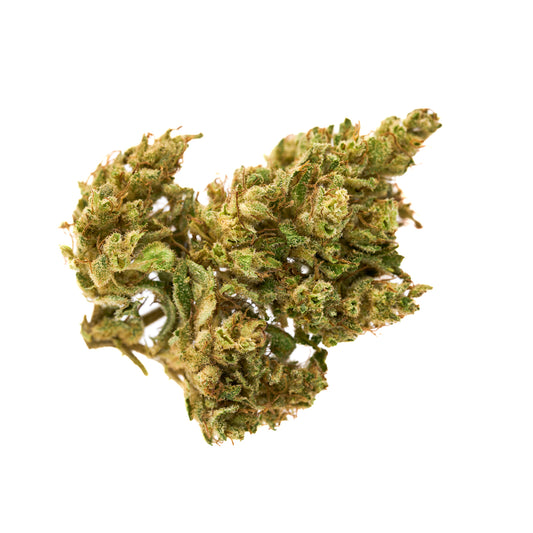
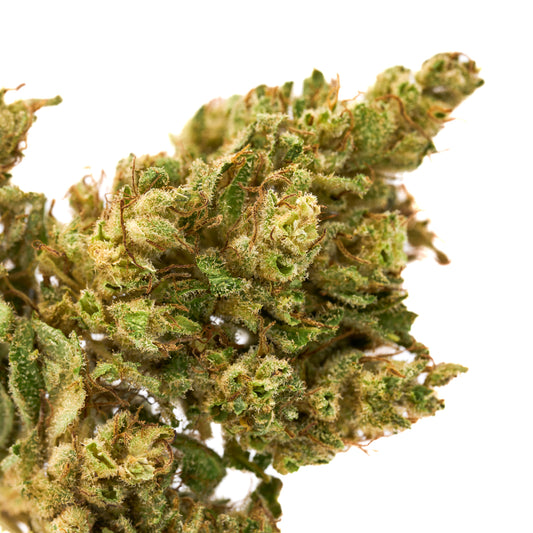
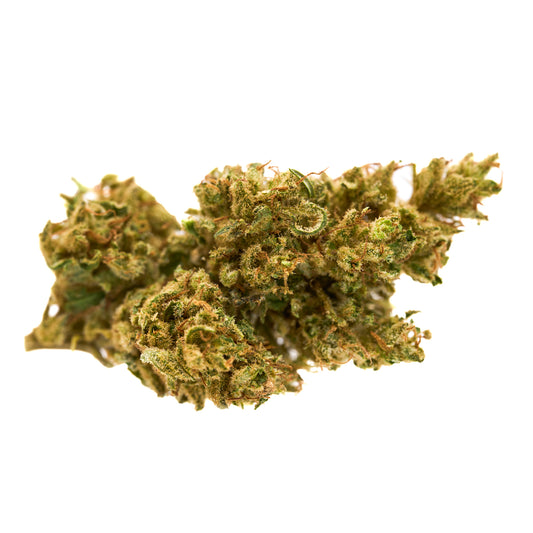
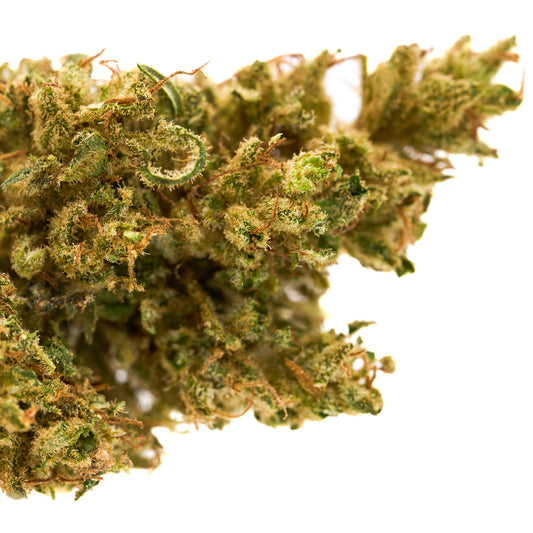
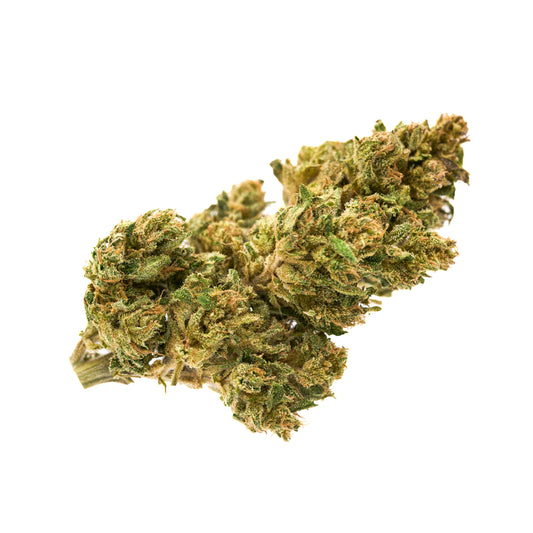
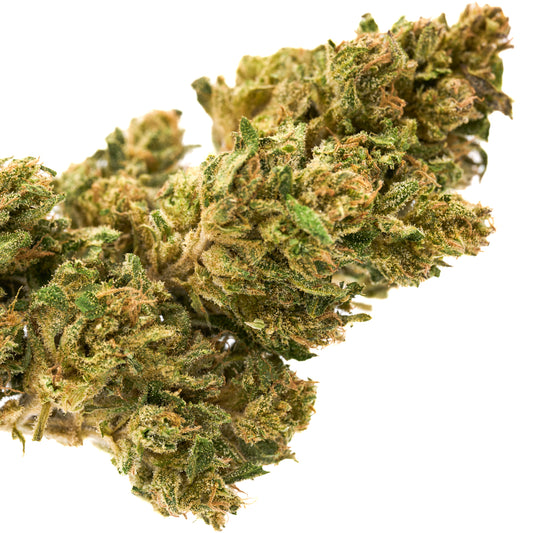



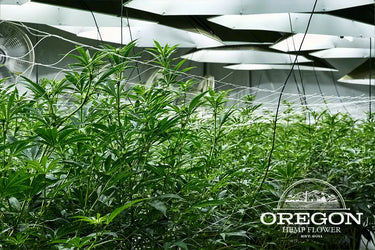

Leave a comment
Please note, comments need to be approved before they are published.